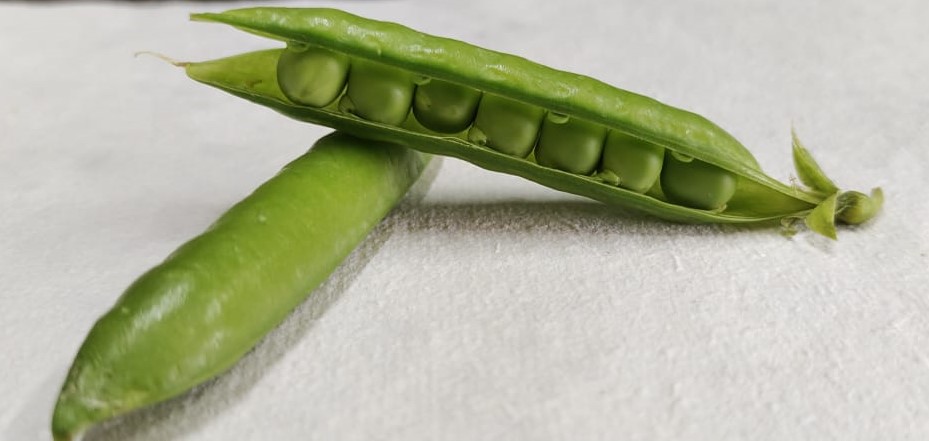

Lathyrus oleraceus Lam.
|
Green pea is a leguminous seed vegetable belonging to the family Fabaceae. Green peas are a good source of pigments chlorophyll and carotenoids and contain antioxidants like polyphenols such as Kaempferol, Quercetin and Caffeic acid and water soluble vitamin C. Green peas extracts and protein have anti-inflammatory and anticancer properties and they function by inhibiting pro-inflammatory cytokines TNF-α and IL-6, and NO production. Mode of Consumption : Fresh, fried and boiled |
| Plant Details | Agro-climatic Zone | Vernacular Names | Pictures |
| Scientific Name: Lathyrus oleraceus Lam. Family: Fabaceae Lindl. Class: Magnoliopsida Order: Fabales Genus: Lathyrus L. Fruiting Season: July-October Parts: Seeds |
|
Andhra Pradesh : Batanilu Assam : Motor Bihar : Hari mattar Himachal Pradesh : Hari mattar Karnataka : Avarekalu Maharashtra : Vatane Tamil Nadu : Paccai pattani Uttar Pradesh : Hari mattar |
 Pods |
| Compound/Extract | Activity | Mode of Action | Marker/References |
| Pea protein hydrolysate | Anti-inflammatory | Inhibated the release of pro-inflammatory cytokines TNF-α and IL-6, and NO production | Cytokines TNF-α and IL-6, and NO production, [1] |
| Pea protease inhibitor concentrate | Anticancer | Pea protein isolates has been related directly to the ability to inhibit chymotrypsin-like proteases | Chymotrypsin-like proteases[6] |
| Major Class | Metabolites (Content of bioactives: mg/100g Fresh Weight) |
| Carotenoid | Lutein : 1.7mg/100g, β- Carotene : 0.5mg/100g[5] |
| Flavonoid | Kaempferol : 0.07mg/100g, Quercetin : 0.03[4] |
| Phenolic acid | Protocatechuic acid: 0.02-0.15mg/100g[4] |
| Effect | Observation | DOI |
| Disease | Formulation | Reference | Author | TKDL |
| Information from Wealth of India | Reference |
| 4.2, 04.2.1, 04.2.1.1, 04.2.1.3, 04.2.2.3, 04.2.2.5, 04.2.2.6, 04.2.2.8 |
| CSIR-North East Institute of Science and Technology, Jorhat-6, Assam, India
CSIR-Institute of Himalayan Bioresource Technology, Palampur-61,Himachal Pradesh, India |